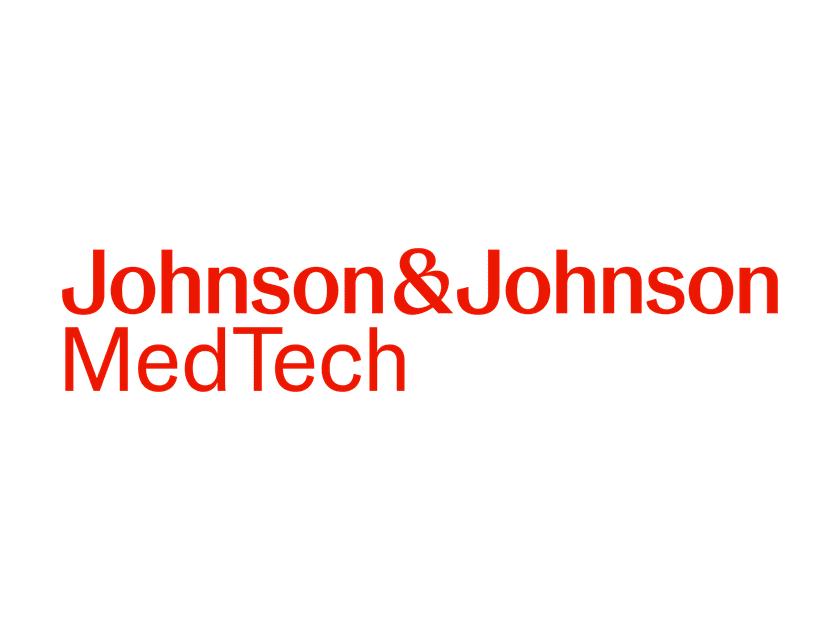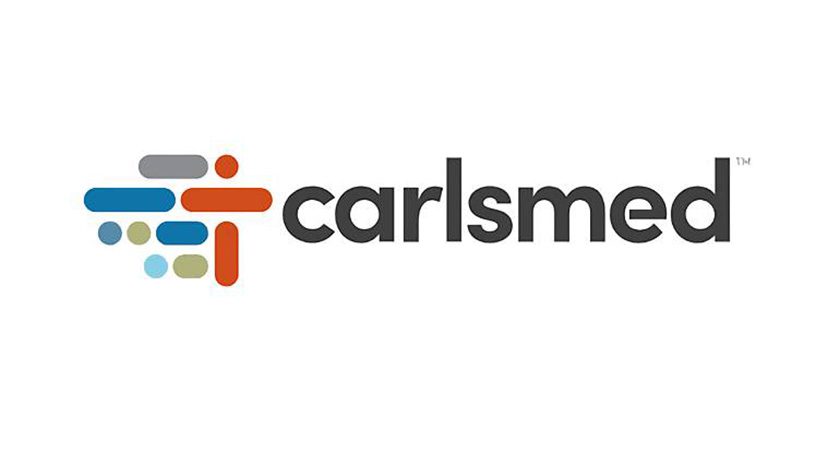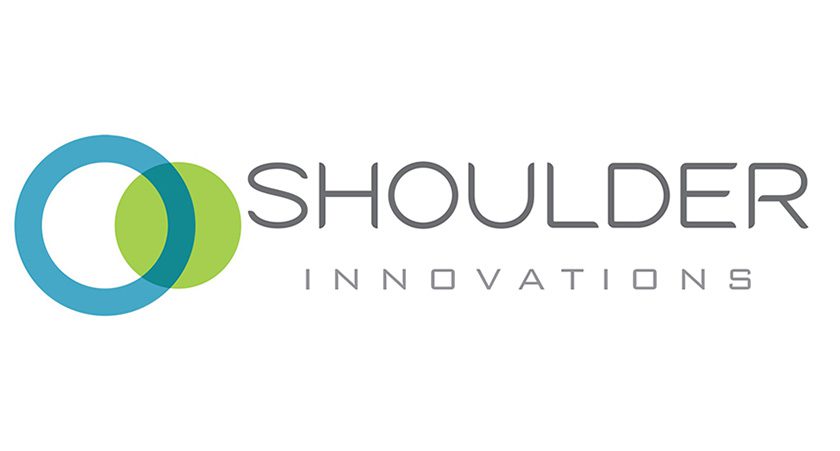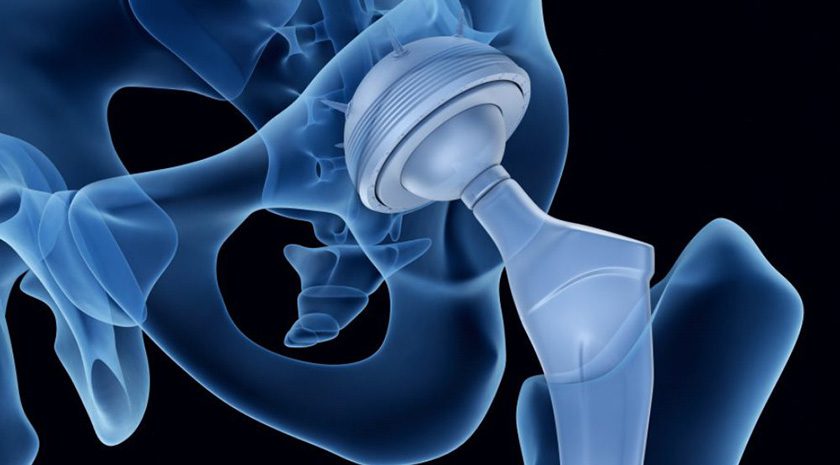

 Copy to clipboard
Copy to clipboard 
In the wake of the COVID-19 pandemic, attractive valuations and abundantly available capital have led to record numbers of initial public offerings (IPOs). Additionally, opportunities to benefit from market disruption have made companies hungry for capital infusions. In 2019, Nasdaq had 124 IPOs that raised $24 billion for the entire year. Through the first three quarters of 2021, it has 560 new listings raising more than $136 billion through traditional IPOs, special purpose acquisition companies and direct listings. Actual operating companies accounted for 250 new listings this year, activity that Nasdaq head of Western U.S. Listings Jeff Thomas called “off the charts.”
Three orthopedic companies – Treace Medical Concepts, Bioventus and Paragon 28 – made the leap in 2021. Market conditions could induce more orthopedic companies to go public in 2022. Nasdaq President Nelson Griggs said, “There’s a very healthy pipeline and quite a bit more in the consumer tech and healthcare spaces.”
Based on recent activity, many of the orthopedic companies that filed for an IPO were well-established, niche players. In considering private companies over $100 million, Exactech and Corin are two that have made major portfolio enhancements of late. Both are private-equity backed and, we believe, could target an IPO.
Even with favorable market conditions, going public can be challenging, though. Of the 11 orthopedic IPOs in the last five years, almost a third were withdrawn. Below is a brief roundup of orthopedic IPOs since 2016.
Bioventus
Year: 2021 | Segment: Orthobiologics | Proceeds: $104 million | Status: Complete
Bioventus announced its second IPO try with an initial public offering of its Class A common stock targeting $100 million in proceeds. The company offered 7.35 million shares at an expected price between $16 and $18 per share, and trades on the NASDAQ under the symbol BVS. This was Bioventus’ second attempt at an IPO after the company registered for a $150 million initial public offering in July 2016, only to postpone it a few months later. The completed IPO came with Bioventus in a stronger financial position compared to 2016. Despite the effects of the pandemic, the company generated $321 million in 2020 with growth above the market average.
Paragon 28
Year: 2021 | Segment: Foot and Ankle | Proceeds: $125 million | Status: Complete
Paragon 28 raised $125 million, before deducting commissions and expenses, in an initial public offering that will fund working capital and general corporate expenses. The company is exclusively focused on the foot and ankle orthopedic market. Its orthopedic solutions, procedural approaches and instrumentation cover a range of foot and ankle ailments, including fracture fixation, hallux valgus, hammertoe, ankle, progressive collapsing foot deformity, Charcot foot and orthobiologics. Paragon 28 was founded in 2010 and booked $134 million in sales for the 12 months ended June 30, 2021. It listed on the NYSE under the symbol FNA.
Treace Medical Concepts
Year: 2021 | Segment: Foot and Ankle | Proceeds: $106 million | Status: Complete
Treace has developed the Lapiplasty 3D Bunion Correction System, comprising instruments, implants and surgical methods designed to improve the inconsistent clinical outcomes of traditional approaches to bunion surgery. Since receiving FDA 510(k) clearance for the system in 2015, more than 25,000 Lapiplasty procedures have been performed in the U.S. For 2020, the company posted revenue of $57.3 million in revenue, +45.5% vs. 2019. Treace expected preliminary unaudited revenue for 1Q21 to be $18.5 million to $18.7 million, +65% vs. 1Q20. The number of Lapiplasty Procedure Kits sold was expected at approximately 3,500 to 3,530, as compared to 2,187 for the same period in 2020. The company’s common stock has been approved for listing on Nasdaq under the symbol TMCI.
Spinal Elements
Year: 2020 | Segment: Spine | Proceeds: $108 million | Status: Withdrawn
Founded in 2003, Spinal Elements was one of the first companies to use PEEK as a material for interbody devices. The company was also the first to get FDA 510(k) clearance for a PEEK interbody, the first with a stand-alone cervical device, and the first to apply a titanium surface coating onto PEEK interbody devices (Ti-Bond). The company posted 2018 and 2019 revenue of $90.8 million and $95.9 million, respectively, +5.6% year over year. However, the company postponed its $108 million IPO, citing unfavorable market conditions.
Medacta
Year: 2019 | Segment: Multiple | Proceeds: $96 million | Status: Complete
Medacta was founded in 1999 and primarily serves the hip and knee replacement markets, with a growing business in spine and sports medicine. The company markets its products through a direct presence in 12 countries and distributors in an additional 20 countries. In April 2019, Medacta successfully priced its IPO at CHF 96 (USD $96.1) per share. The year prior to its IPO, Medacta generated $332 million in revenue. The company-founding Siccardi family kept around two-thirds of Medacta’s share capital while offering 5.7 million shares, implying a base offer starting at CHF 547 million (USD $547.8 million), depending upon over-allotment shares, and a market capitalization of CHF 1.92 billion (USD $1.92 billion).
Medartis
Year: 2018 | Segment: Trauma | Proceeds: $151 million | Status: Complete
Medartis was founded in 1997 and is headquartered in Basel, Switzerland. Its products, devices for fixation in the extremities and craniomaxillofacial regions, are marketed in 44 countries, including Australia, Brazil, France, Germany, Japan, Switzerland, the U.K. and the U.S., with the EMEA and APAC regions generating key growth contributions. All products are manufactured in-house. Prior to its IPO, the company generated $118 million in revenue for 2017. Medartis raised gross proceeds of CHF 123.9 million and CHF 142.6 million, including an over-allotment of shares, in its IPO. (These figures translate to ~US $131.2 million and ~$151.0 million, respectively.) Funds supported growth initiatives like international expansion and product development, as well as potential acquisitions and general corporate purposes.
SI-BONE
Year: 2018 | Segment: Spine | Proceeds: $98 million | Status: Complete
SI-BONE makes the iFuse and iFuse-3D minimally invasive surgical implant systems for the treatment of sacroiliac joint dysfunction. In 2017, the company posted revenue of US $48.0 million, +14.0% from 2016. The company’s growth has been bolstered by widespread insurance coverage for sacroiliac fusion procedures, with many positive payor coverage policies exclusive to iFuse. In late 2018, SI-BONE publicly filed a registration statement for a proposed $97.7 million initial public offering of shares of its common stock, and applied to list on NASDAQ as SIBN with proceeds primarily supporting commercialization activities.
SpineEx
Year: 2018 | Segment: Spine | Proceeds: $17 million | Status: Withdrawn
SpineEx developed the Sagittae expandable and adjustable cage for lateral lumbar fusion, which received FDA 510(k) clearance in late 2018. Just before that clearance, the pre-revenue company filed its IPO with a proposed deal size of $17 million, but withdrew the filing before the end of the year. The original registration statement was not declared effective, and no shares of common stock or other securities were sold under the registration statement. SpineEx requested that all fees paid to the SEC in connection with the filing be credited to the company’s account as an offset of all or a portion of fees for a subsequent filing.
BONESUPPORT
Year: 2017 | Segment: Orthobiologics | Proceeds: $53 million | Status: Complete
BONESUPPORT markets CERAMENT injectable, drug-eluting bioceramic bone graft substitutes to treat bone voids. BONESUPPORT commenced trading on Nasdaq Stockholm following completion of its IPO, for which the final price was set at SEK 29/share (~US $3.31/share). At the time, BONESUPPORT generated $14 million in annual revenue. Final IPO proceeds after issue costs were SEK 461 million (~$53.0 million). Funds contributed to supporting U.S. and EU sales, collection of clinical data and product development.
Ellipse Technologies
Year: 2016 | Segments: Spine, Trauma | Proceeds: $75 million | Status: Withdrawn
Ellipse’s magnetically adjustable implant systems were based on its MAGnetic External Control (MAGEC) technology, and include MAGEC−EOS spinal bracing and distraction for treatment of early onset scoliosis and the PRECICE limb lengthening system. In 2014 it generated $26 million in revenue. The company withdrew its IPO after agreeing to be acquired by NuVasive.
OrthoPediatrics
Year: 2016 | Segment: Multiple | Proceeds: $52 million | Status: Complete
OrthoPediatrics was founded in 2006 and logged $31 million in revenue for 2015. The company has developed and received regulatory clearance for 17 surgical systems for trauma, long bone deformity and correction, scoliosis and sports-medicine, focused on pediatric patients. After initially filing to raise $75 million, the company amended its filing to $57.5 million which closed in 2017. Net proceeds went to pay dividends on Series B Preferred Stock, invest in implant/instrument sets, support R&D, expand sales and marketing, acquisitions and investments.
Conclusion
Seven orthopedic companies have launched successful IPOs in the last five years. While history indicates that IPOs don’t often happen in the space, with the current valuations and the amount of capital available in the public market, we wouldn’t be surprised to see more companies seek this route in 2021 or 2022.
In the wake of the COVID-19 pandemic, attractive valuations and abundantly available capital have led to record numbers of initial public offerings (IPOs). Additionally, opportunities to benefit from market disruption have made companies hungry for capital infusions. In 2019, Nasdaq had 124 IPOs that raised $24 billion for the entire year....
In the wake of the COVID-19 pandemic, attractive valuations and abundantly available capital have led to record numbers of initial public offerings (IPOs). Additionally, opportunities to benefit from market disruption have made companies hungry for capital infusions. In 2019, Nasdaq had 124 IPOs that raised $24 billion for the entire year. Through the first three quarters of 2021, it has 560 new listings raising more than $136 billion through traditional IPOs, special purpose acquisition companies and direct listings. Actual operating companies accounted for 250 new listings this year, activity that Nasdaq head of Western U.S. Listings Jeff Thomas called “off the charts.”
Three orthopedic companies – Treace Medical Concepts, Bioventus and Paragon 28 – made the leap in 2021. Market conditions could induce more orthopedic companies to go public in 2022. Nasdaq President Nelson Griggs said, “There’s a very healthy pipeline and quite a bit more in the consumer tech and healthcare spaces.”
Based on recent activity, many of the orthopedic companies that filed for an IPO were well-established, niche players. In considering private companies over $100 million, Exactech and Corin are two that have made major portfolio enhancements of late. Both are private-equity backed and, we believe, could target an IPO.
Even with favorable market conditions, going public can be challenging, though. Of the 11 orthopedic IPOs in the last five years, almost a third were withdrawn. Below is a brief roundup of orthopedic IPOs since 2016.
Bioventus
Year: 2021 | Segment: Orthobiologics | Proceeds: $104 million | Status: Complete
Bioventus announced its second IPO try with an initial public offering of its Class A common stock targeting $100 million in proceeds. The company offered 7.35 million shares at an expected price between $16 and $18 per share, and trades on the NASDAQ under the symbol BVS. This was Bioventus’ second attempt at an IPO after the company registered for a $150 million initial public offering in July 2016, only to postpone it a few months later. The completed IPO came with Bioventus in a stronger financial position compared to 2016. Despite the effects of the pandemic, the company generated $321 million in 2020 with growth above the market average.
Paragon 28
Year: 2021 | Segment: Foot and Ankle | Proceeds: $125 million | Status: Complete
Paragon 28 raised $125 million, before deducting commissions and expenses, in an initial public offering that will fund working capital and general corporate expenses. The company is exclusively focused on the foot and ankle orthopedic market. Its orthopedic solutions, procedural approaches and instrumentation cover a range of foot and ankle ailments, including fracture fixation, hallux valgus, hammertoe, ankle, progressive collapsing foot deformity, Charcot foot and orthobiologics. Paragon 28 was founded in 2010 and booked $134 million in sales for the 12 months ended June 30, 2021. It listed on the NYSE under the symbol FNA.
Treace Medical Concepts
Year: 2021 | Segment: Foot and Ankle | Proceeds: $106 million | Status: Complete
Treace has developed the Lapiplasty 3D Bunion Correction System, comprising instruments, implants and surgical methods designed to improve the inconsistent clinical outcomes of traditional approaches to bunion surgery. Since receiving FDA 510(k) clearance for the system in 2015, more than 25,000 Lapiplasty procedures have been performed in the U.S. For 2020, the company posted revenue of $57.3 million in revenue, +45.5% vs. 2019. Treace expected preliminary unaudited revenue for 1Q21 to be $18.5 million to $18.7 million, +65% vs. 1Q20. The number of Lapiplasty Procedure Kits sold was expected at approximately 3,500 to 3,530, as compared to 2,187 for the same period in 2020. The company’s common stock has been approved for listing on Nasdaq under the symbol TMCI.
Spinal Elements
Year: 2020 | Segment: Spine | Proceeds: $108 million | Status: Withdrawn
Founded in 2003, Spinal Elements was one of the first companies to use PEEK as a material for interbody devices. The company was also the first to get FDA 510(k) clearance for a PEEK interbody, the first with a stand-alone cervical device, and the first to apply a titanium surface coating onto PEEK interbody devices (Ti-Bond). The company posted 2018 and 2019 revenue of $90.8 million and $95.9 million, respectively, +5.6% year over year. However, the company postponed its $108 million IPO, citing unfavorable market conditions.
Medacta
Year: 2019 | Segment: Multiple | Proceeds: $96 million | Status: Complete
Medacta was founded in 1999 and primarily serves the hip and knee replacement markets, with a growing business in spine and sports medicine. The company markets its products through a direct presence in 12 countries and distributors in an additional 20 countries. In April 2019, Medacta successfully priced its IPO at CHF 96 (USD $96.1) per share. The year prior to its IPO, Medacta generated $332 million in revenue. The company-founding Siccardi family kept around two-thirds of Medacta’s share capital while offering 5.7 million shares, implying a base offer starting at CHF 547 million (USD $547.8 million), depending upon over-allotment shares, and a market capitalization of CHF 1.92 billion (USD $1.92 billion).
Medartis
Year: 2018 | Segment: Trauma | Proceeds: $151 million | Status: Complete
Medartis was founded in 1997 and is headquartered in Basel, Switzerland. Its products, devices for fixation in the extremities and craniomaxillofacial regions, are marketed in 44 countries, including Australia, Brazil, France, Germany, Japan, Switzerland, the U.K. and the U.S., with the EMEA and APAC regions generating key growth contributions. All products are manufactured in-house. Prior to its IPO, the company generated $118 million in revenue for 2017. Medartis raised gross proceeds of CHF 123.9 million and CHF 142.6 million, including an over-allotment of shares, in its IPO. (These figures translate to ~US $131.2 million and ~$151.0 million, respectively.) Funds supported growth initiatives like international expansion and product development, as well as potential acquisitions and general corporate purposes.
SI-BONE
Year: 2018 | Segment: Spine | Proceeds: $98 million | Status: Complete
SI-BONE makes the iFuse and iFuse-3D minimally invasive surgical implant systems for the treatment of sacroiliac joint dysfunction. In 2017, the company posted revenue of US $48.0 million, +14.0% from 2016. The company’s growth has been bolstered by widespread insurance coverage for sacroiliac fusion procedures, with many positive payor coverage policies exclusive to iFuse. In late 2018, SI-BONE publicly filed a registration statement for a proposed $97.7 million initial public offering of shares of its common stock, and applied to list on NASDAQ as SIBN with proceeds primarily supporting commercialization activities.
SpineEx
Year: 2018 | Segment: Spine | Proceeds: $17 million | Status: Withdrawn
SpineEx developed the Sagittae expandable and adjustable cage for lateral lumbar fusion, which received FDA 510(k) clearance in late 2018. Just before that clearance, the pre-revenue company filed its IPO with a proposed deal size of $17 million, but withdrew the filing before the end of the year. The original registration statement was not declared effective, and no shares of common stock or other securities were sold under the registration statement. SpineEx requested that all fees paid to the SEC in connection with the filing be credited to the company’s account as an offset of all or a portion of fees for a subsequent filing.
BONESUPPORT
Year: 2017 | Segment: Orthobiologics | Proceeds: $53 million | Status: Complete
BONESUPPORT markets CERAMENT injectable, drug-eluting bioceramic bone graft substitutes to treat bone voids. BONESUPPORT commenced trading on Nasdaq Stockholm following completion of its IPO, for which the final price was set at SEK 29/share (~US $3.31/share). At the time, BONESUPPORT generated $14 million in annual revenue. Final IPO proceeds after issue costs were SEK 461 million (~$53.0 million). Funds contributed to supporting U.S. and EU sales, collection of clinical data and product development.
Ellipse Technologies
Year: 2016 | Segments: Spine, Trauma | Proceeds: $75 million | Status: Withdrawn
Ellipse’s magnetically adjustable implant systems were based on its MAGnetic External Control (MAGEC) technology, and include MAGEC−EOS spinal bracing and distraction for treatment of early onset scoliosis and the PRECICE limb lengthening system. In 2014 it generated $26 million in revenue. The company withdrew its IPO after agreeing to be acquired by NuVasive.
OrthoPediatrics
Year: 2016 | Segment: Multiple | Proceeds: $52 million | Status: Complete
OrthoPediatrics was founded in 2006 and logged $31 million in revenue for 2015. The company has developed and received regulatory clearance for 17 surgical systems for trauma, long bone deformity and correction, scoliosis and sports-medicine, focused on pediatric patients. After initially filing to raise $75 million, the company amended its filing to $57.5 million which closed in 2017. Net proceeds went to pay dividends on Series B Preferred Stock, invest in implant/instrument sets, support R&D, expand sales and marketing, acquisitions and investments.
Conclusion
Seven orthopedic companies have launched successful IPOs in the last five years. While history indicates that IPOs don’t often happen in the space, with the current valuations and the amount of capital available in the public market, we wouldn’t be surprised to see more companies seek this route in 2021 or 2022.

You are out of free articles for this month
Subscribe as a Guest for $0 and unlock a total of 5 articles per month.
You are out of five articles for this month
Subscribe as an Executive Member for access to unlimited articles, THE ORTHOPAEDIC INDUSTRY ANNUAL REPORT and more.
ME
Mike Evers is a Senior Market Analyst and writer with over 15 years of experience in the medical industry, spanning cardiac rhythm management, ER coding and billing, and orthopedics. He joined ORTHOWORLD in 2018, where he provides market analysis and editorial coverage.







